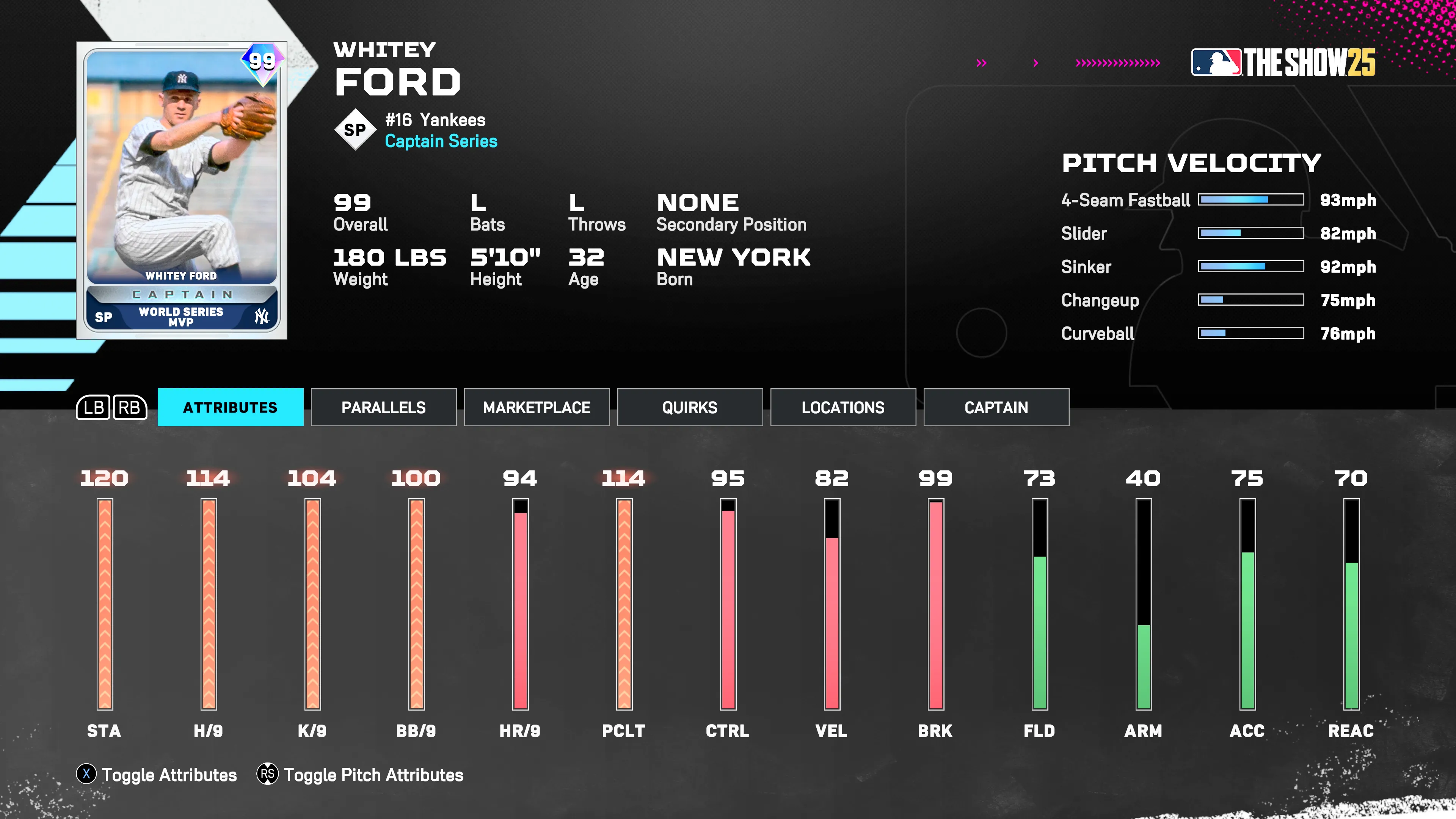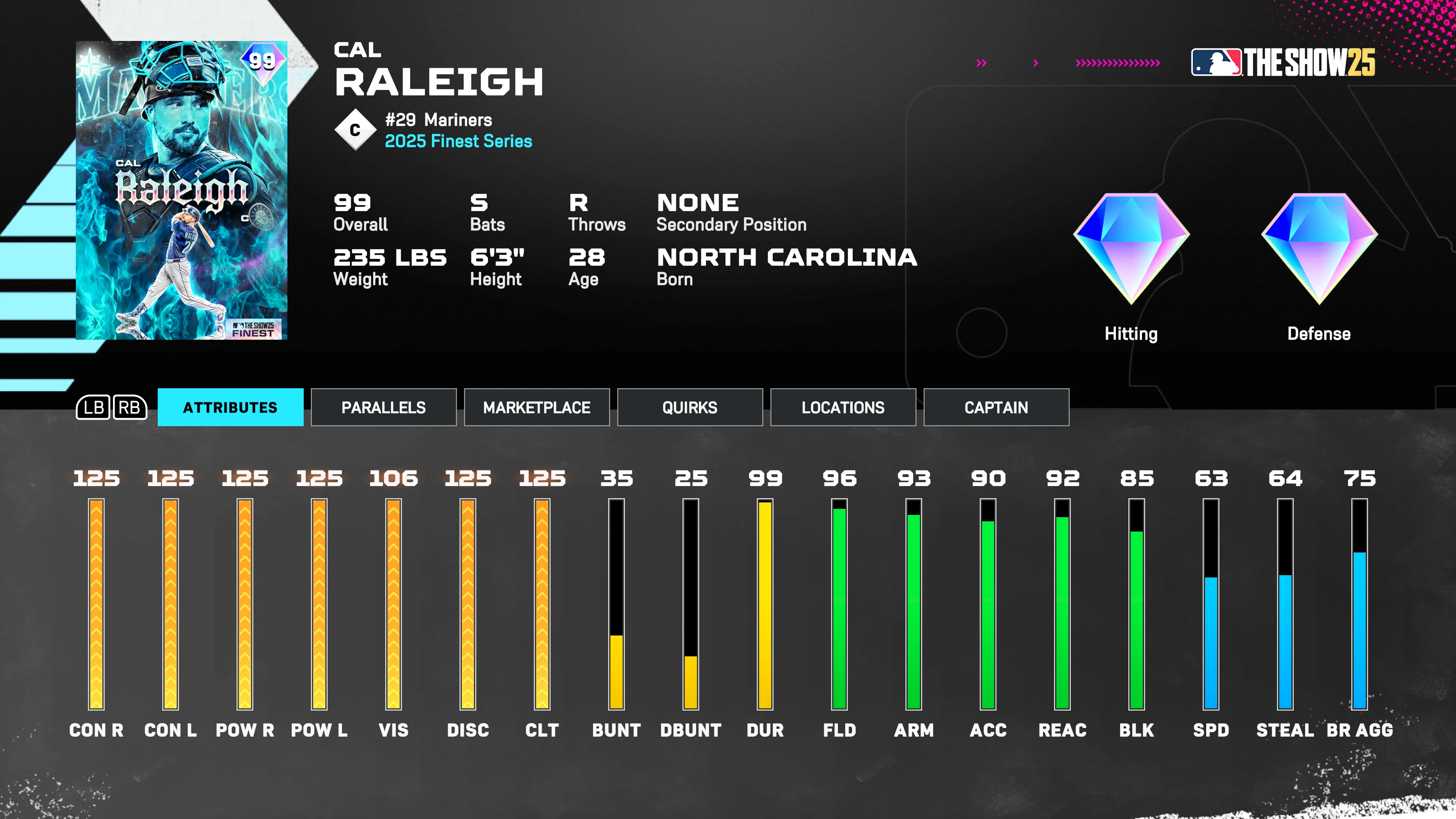On this page
We’re a few weeks into Season 2 in Diamond Dynasty of MLB The Show 24, and it’s … certainly a batch of live content in a live-service video game. With a reset of OVR ratings and the power curve and an introduction of new players and grinds, Season 2 is not that different from Season 1 – and there are good and bad things about that for the player base.
Let’s delve into the good, bad, and downright boring of Season 2.
Good: A Reset of the Grind
To put this simply: Some – many – Diamond Dynasty players are in it for the grind.
It’s not necessarily the “Grind 99” ethos espoused by Ramone Russell of Sony San Diego that these players are most into, either: They might find something meditative or therapeutic or even like flow in repeatedly playing Mini Seasons or Conquest games, or completing Showdown after Showdown, or spending hours in online multiplayer, or even in opening packs and doing collections. And to be clear, at least some of that grind likely has appeal to virtually every DD user.
So having a new set of short-, medium-, and long-term objectives, chases, and modes gives those players – especially those who maxed out Season 1, or at least did everything they desired within it – something to do, whether it’s building toward Chipper Jones, piecing together the Season 2 Collection, or trying to make World Series again.
Is some of that doable outside the seasonal model? Yes. Are there downsides to a seasonal reset? Undoubtedly. But we’ll get to those ideas, and can acknowledge the good in resetting the grind for now.
Good: Chipper, Griffey, and Roy
What’s better: Ultimately obtaining three 99 OVR cards right at the pinnacle of an XP reward path, or getting versions of them along the way? It’s the latter, and there really should not be much of a debate about that.
In Season 1, to get Andy Pettitte, Jimmy Rollins, and Larry Walker, players had to grind for over 1 million Season 1 XP – and would not get even a version of one of those three cards until right around that threshold. In Season 2, players get versions of Ken Griffey Jr., Roy Halladay, and Chipper Jones throughout the XP reward path, and getting to the point where you get one of the 99 OVR versions gets you all of them.
That Season 1 design made those three cards – all of whom are at least borderline Hall of Famers in reality, and two of whom (Rollins and Walker) are legends in Diamond Dynasty – strong rewards at the end of the XP reward path, but very, very difficult to obtain, especially with the limitations on earning XP in Season 1. This Season 2 design allows players to try out a trio of cards that are even bigger names – and in the cases of Griffey and Jones, endgame-level DD items – as they go, and assess whether they really want to pound out all the hits and pitch all the innings necessary to fully complete the XP reward path.
Most ardent DD players will try to do that for Chipper and The Kid, too, and that Halladay is as or slightly more desired than Pettitte. But giving those diehards and more casual players a chance to try out or get familiar with players who will be mainstays in a lineup is significantly better than having their best versions dangled as distant carrots, and this should really be the format for these XP reward path bosses going forward.
Good: Variety, of a Kind
There were a little over 100 cards at or above 97 OVR in Season 1. Excluding the Core cards that are technically not Season 1 cards, exactly zero of those cards have thus far gotten 93 OVR or better cards in Season 2.
This is a good thing, because it shakes up the stale meta that develops at the end of a season by straight-up replacing it, forcing players to roll out new lineups, develop new strategies, and build new muscle memory. Playing with – and, moreover, against – the same 99 OVR pitchers and seeing the same batters for the entire life cycles of previous Diamond Dynasty iterations was not particularly fun, especially when those players were as good as, say, the Clayton Kershaw and Corey Kluber that ruled the mound in years gone by.
This year’s game will still see a lot of the 99 Babe Ruth – who has thousands upon thousands of Parallel V completions, mind – but is unlikely to have any other card remembered as dominant forever like that Kershaw and Kluber were. Given how oppressive that sort of lasting dominance can feel, the seasonal reset is a win for defeating that sensation.
Bad: A Reset of What’s Mine
All that said about the benefits of resetting the card pool: It still feels distinctly unfair to essentially take away players’ toys, especially ones they earned through gameplay.
Did you grind through all of Team Affinity in Season 1? You have more than a hundred cards that are no longer usable. Make World Series or go flawless in Battle Royale? You’re going to have to pick which of those sick cards you carry forward. Did you love your favorite theme team? Tough luck; build a new one.
Yes, the Wild Card system allows access to a few of the cards from Season 1 in Season 2, and yes, players can technically do things like complete old Conquest or Mini Seasons content with Season 1 cards. They aren’t completely off limits.
But they aren’t allowed in the sandboxes of competitive multiplayer or some single-player content, and their planned obsolescence feels even worse than it does in the case of an iPhone or laptop because it takes a little more than a couple of months and feels more arbitrary. There are fixes available here – making more Wild Card slots available and introducing different ways to unlock them would be a fine start – but the idea is a core design mechanic, and seems like Sony San Diego’s best one for balancing the power fantasy and collector dreams presented by Diamond Dynasty at present.
It should keep working on that.
Bad: Variety, but With Limits
One cool thing about the Season XP reward path bosses is that not one of them began his MLB career prior to 1989, when Ken Griffey Jr. broke in as a 19-year-old. And of them, only Jimmy Rollins, who played a couple of vestigial seasons with the Dodgers and White Sox (!?) at the end of his career, played MLB within the last 10 years.
Those six players represent a wide swath of baseball’s history from the 1990s to 2010s – but baseball’s history is much broader than that, something that MLB The Show has taken pains to show with its brilliant Storylines mode focusing on the Negro Leagues. Diamond Dynasty does have other content reflecting players from that era – the 99 OVR cards for Bob Gibson, Willie Mays, and Satchel Paige, for example – and makes a fine attempt to transport players to previous eras with the inclusion of different presentations and classic stadiums.
But it could certainly do more, and would do a better job of presenting the full spectrum of baseball’s history if it made sure that pinnacle cards like these reward path bosses represented multiple eras or, when dropping programs like a Retro All-Star Game one, included a player from prior to 1997.
And while it’s doing a fine job of including players from the fairly recent past – and should probably be lauded for including players like Rafael Palmeiro, Mark McGwire, and Sammy Sosa, whose ties to performance-enhancing drugs complicate but certainly do not erase their authorship of chapters of baseball history – it is also struggling to represent its scintillating present. The 2024 campaigns of Aaron Judge and Shohei Ohtani, both poised to hit 50-plus home runs, have thus far been represented in game by cards inferior to their Live Series versions, and while there is a 99 OVR version of Paul Skenes, it’s not Season 2 eligible – to say nothing of Ranger Suárez leading MLB with a sub-2.00 ERA … and having a better Season 1 card than his best Season 2 edition.
There is, of course, an obvious opportunity to rectify this latter misstep. But it is taking forever to get there, isn’t it?
Boring: Waiting for the All-Star Break
You know how the baseball season feels like it’s bisected cleanly by the All-Star Game? That’s not exactly true, as this weekend at the end of June is actually more like the halfway point of the regular season: Every MLB team but the Braves, Guardians, and Mets – all victims of multiple weather-based postponements – has played at least 81 of their scheduled 162 games already, and even those three will hit that mark by weekend’s end, barring more weather woes.
And with MLB The Show dropping a couple of weeks before the beginning of the regular season, its “season” is even longer – so the All-Star Game happening in mid-July makes the Midsummer Classic something that happens about four months after the start of the game’s life cycle.
Add in the seasonal model that got us a reset in early June, with about six weeks to go to the All-Star Break, and the waiting for those magical days of smiles on superstars has been, well, interminable.
It’s fairly likely that the All-Star Game will trigger a large surge of content in Diamond Dynasty: There’s already a Retro All-Star Game program, and there are all of a Retro Home Run Derby event and program, Retro All-Star integration into the Season 2 Collection, and a promise that 2024 All-Stars will be a part of Team Affinity on the in-game content calendar. Probably, that means 95+ OVR versions of a slew of present-day players are coming soon, which should allay any concerns about not getting truly great versions of Judge, Ohtani, or any other 2024 All-Stars whose path to meta-defining cards right now seems to be getting a Season Awards Lightning card. And when those cards do arrive, they will reset the power curve and be greeted with open arms by a player base that is in need of a jolt.
But this long stretch of Season 2 prior to the All-Star Game has not had a jolt of that sort since maybe its release, when Team Affinity dropped – and even calling that release a jolt is generous, given the power reset in going from 99 to 89 OVR cards.
Something about this release calendar needs to be adjusted for future years – and maybe also for the transition from Season 2 to Season 3, set to come in late August and the prime days of the pennant chase. If players are bored and moving on now, why would they come back to experience the same cyclical woes again?

































